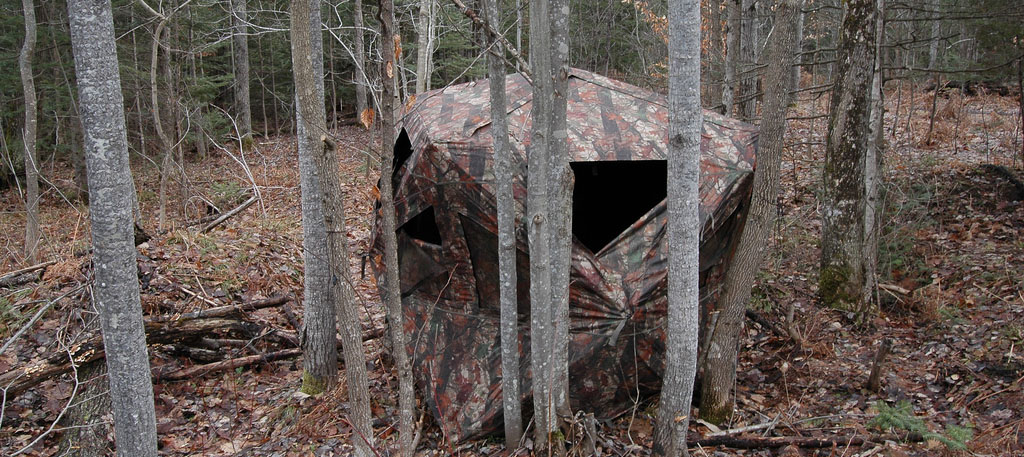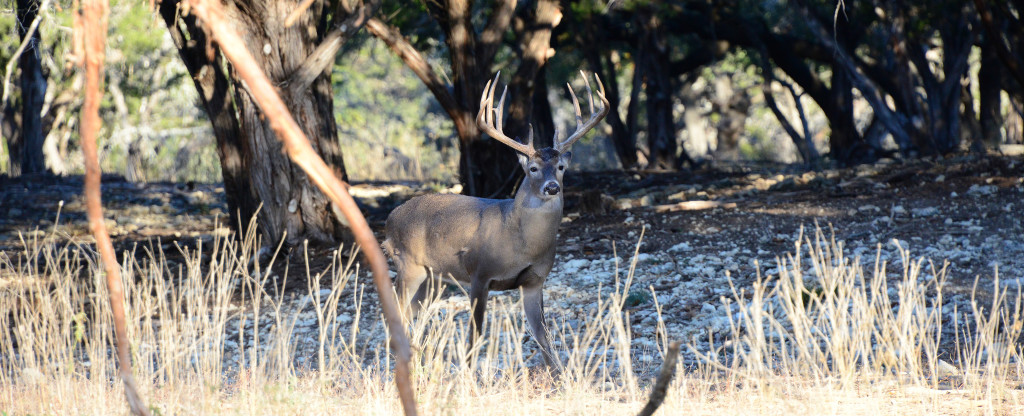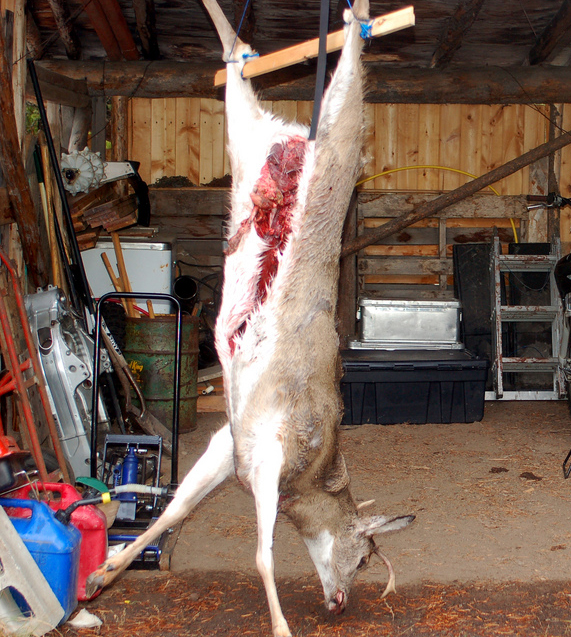 Accuracy is essential for any hunter. Being able to place a rifle round precisely where you intend is the hallmark of a conscientious hunter. Once your scope is mounted to a rifle, it will need to be matched to the rifle and to the shooter. This article will explain how windage and elevation works, what MOA or minute of angle means and shed some light on the parallax adjustment boogeyman.
Accuracy is essential for any hunter. Being able to place a rifle round precisely where you intend is the hallmark of a conscientious hunter. Once your scope is mounted to a rifle, it will need to be matched to the rifle and to the shooter. This article will explain how windage and elevation works, what MOA or minute of angle means and shed some light on the parallax adjustment boogeyman.
Windage and Elevation
Modern scopes come with some way to adjust for windage and elevation. This alleviates having to use guess work when you are sighting in your rifle.
Put simply windage is the way to move the bullet impact left or right and elevation is moving the bullet impact up or down. Scope adjustments are made in ‘minute of angle’ increments or MOA. This is a measure of the degrees in a circle. A full 360 degree circle has 21,600 minutes of angle. If you have a scope that shoots 1 MOA at 100 yards, that adjustment increment will only be 1.047 inches. One increment of angle at 200 yards will be equal to 2.094 inches and at 300 yards that same one MOA increment change will be equal to 3.141 inches. Understand that one increment change at 100 yards will change the impact of your round 1.047 inches but at 300 yards it will move it 3.141 inches. Every scope is different so please consult your owner’s manual for your scopes adjustment increments. Let’s use an example to help illustrate my point.
Scope ‘A’ has an incremental adjustment of 1 ‘click’ is equal to ¼ inch MOA at 100 yards. This means that if your rounds are impacting 3 inches to the left at 100 yards, you have to do 12 ‘clicks’ to the right (¼ x 3=12 ‘clicks’). Just remember that as distance increases, the incremental adjustments increase in size. For each MOA increment adjustment, the space of the adjustment grows. Just multiply the distance by the MOA adjustment. At 100 yards, its ¼ inch, then it will double at 200 yards to ½ inch (2x ¼). At 300 yards it will triple (3x ¼ inch). At 400 yards it will be 1 inch (4 x ¼).
What most shooters don’t understand correctly is that our example scope has adjustments that are set at 100 yards. Still using scope ‘A’ at 200 yards, each ‘click’ would be ½ inch MOA adjustment increments. That is because the target is 2x the distance from the shooter (¼ x 2 = ½ inch per ‘click’). I hope you can see why it is important to know each specific scopes impact increment.
If you have a scope (scope ‘B’ let’s call it) that has an increment adjustment of 1 inch at 100 yards that would mean at 200 yards, each ‘click’ is 2 inches and at 400 yards, 1 ‘click’ is 4 inches. That is a lot different than the scope with an adjustment for ¼ inch at 100 yards.
Point of Aim/Point of Impact
 Once you have sighted your rifle in at a known distance, you have achieved point of aim/point of impact. Point of aim is using the reticle crosshairs as your aiming point, point of impact is where the round will strike your target. If you have sighted your rifle in at 100 yards, your point of aim at 100 yards will be the point of impact of the bullet. Knowing how your rifle cartridge behaves in regards to ballistic trajectory now becomes a factor if you need to shoot closer than 100 yards or farther away.
Once you have sighted your rifle in at a known distance, you have achieved point of aim/point of impact. Point of aim is using the reticle crosshairs as your aiming point, point of impact is where the round will strike your target. If you have sighted your rifle in at 100 yards, your point of aim at 100 yards will be the point of impact of the bullet. Knowing how your rifle cartridge behaves in regards to ballistic trajectory now becomes a factor if you need to shoot closer than 100 yards or farther away.
I am using Federal Premium 30.06 150 grain soft point Power-shok as an example to explain point of aim and how to understand Kentucky windage. We are using a rifle and scope combination that has been sighted in for 200 yards. That is the point of aim/point of impact. According to Federal Premium, this round is +1.8 inches at 100 yards, that means that if a target is at 100 yards the bullet will strike +1.8 inches above the crosshairs. At 200 yards, the round will impact at the point the crosshairs are aimed at. At 300 yards, the round has begun its decent (its apex was at 200-225 yards) and will impact a target -8.2 inches below the point of aim. This means that if you want to strike a specific point you have to aim ABOVE the target 8.2 inches. At 400 yards the bullet has dropped to -24.4 inches. So, if you use a rifle that has been sighted in at 200 yards using this ammunition and want to shoot a deer at 400 yards, your point of aim it 2 FEET above the deer’s body.
By adjusting our aim point without manipulating your scopes windage/elevation knobs, you are using ‘Kentucky windage’ to adjust. If your rifle/scope combination is sighted in for a different distance, this information will change. There are applications for smart phones and computer programs available to assist you with that endeavor if you decide to use a different point of aim/point of impact.
Let’s say that you want to adjust your scope by the use of the windage/elevation knobs instead of using Kentucky windage to correct for bullet drop at the range of 400 yards. Using the above example of the Federal 30.06 round, we know that if your rifle/scope combination is sighted in at 200 yards, the bullet will have dropped 24 inches at 400 yards. If you desire to adjust your point of aim/point of impact to reflect an impact at 400 yards, you will have to raise your impact point 24 inches.
 By manipulating your scopes elevation knob using the example of scope ‘A’ from above, each ‘click’ will raise the impact point up 1 inch (¼ inch at 100 yard, 1/2 inch at 200 yards, 3/4 inch at 300 yards and 1 inch at 400 yards). So to raise the point of aim to reflect the point of impact, you would have to apply 24 ‘clicks’ to your scopes up elevation. Be sure to know which way is the ‘up’ adjustment for your scope. If your scope has a mark with an ‘UP’ arrow, that’s the direction to turn the knob to raise the bullet impact up. Don’t laugh, I see a lot of people over think this operation. Just follow the marking on your scope to do what you want to have it do.
By manipulating your scopes elevation knob using the example of scope ‘A’ from above, each ‘click’ will raise the impact point up 1 inch (¼ inch at 100 yard, 1/2 inch at 200 yards, 3/4 inch at 300 yards and 1 inch at 400 yards). So to raise the point of aim to reflect the point of impact, you would have to apply 24 ‘clicks’ to your scopes up elevation. Be sure to know which way is the ‘up’ adjustment for your scope. If your scope has a mark with an ‘UP’ arrow, that’s the direction to turn the knob to raise the bullet impact up. Don’t laugh, I see a lot of people over think this operation. Just follow the marking on your scope to do what you want to have it do.
Most hunters use a cheat sheet with the ballistic information for the round they are using taped to the inside of the scopes dust cover. When the dust cover is open the ballistic information is printed on the cheat sheet for easy access. Range estimation is vital as well as knowing the size of your target. Those talents will be discussed in a later article.
Windage is more difficult to adjust for. At close range, a mild wind will not affect the impact of the bullet substantially. As range increases, the affects of wind increase due to the rounds loss of velocity. The only true way to learn your cartilages’ windage adjustment is to fire at distance on windy days, or doing research on the topic.
Leading the target is another use for Kentucky windage. If your deer is walking slowly across your field of view, you aim slightly ahead of the deer. The farther the distance, the farther ahead you have to aim. Usually, the deer will not be walking so fast that you need to adjust your aim point for movement. Do realize that the longer the distance from you, the longer the round will take to reach its target. Leading the target really should only fact in when you are shooting at a running animal. I advise that you do not shoot at a running animal at all. The chances of a miss or a non-lethal hit are too high to risk such a shot.
Parallax
If you have been shopping for a scope, you might have heard the terms ‘Parallax’ or ‘Parallax Adjustment’ bantered about a fair bit. The key to remember with parallax is that if you are correctly using your scope by keeping your eye centered straight through the middle of the exit pupil and are shooting less than 400-500 yards there will not be a noticeable distortion. The most parallax will occur when you view your exit pupil through the very edge of the view.
To help you understand the effects of parallax, let’s use the driving example. As you drive your car down the road, the mile markers and object near the road seem to flash past, while the mountains in the distance seem to hold still. That is parallax. At high scope magnification, the effects of parallax are more noticeable but only at longer distances. Most factory rifle scopes come with the parallax setting at a specific distance. Most hunters do not need to factor in parallax since most shots are taken 500 yards and closer.
For example, a 4x power scope with the factory focus set at 150 yards has a maximum error for parallax of 8/10th of an inch at 500 yards. That is not much to worry about. If you plan on taking shots at more than 500 yards, be sure to look through the middle of the scope, keeping your eye centered on the exit pupil.
Final Thoughts
There is a lot of information out there in regards to the topics we have covered. Doing proper research into what brand/type of scope you are thinking of purchasing will save you time, money and headache in the long run. I hope this “Scopes 101 series” has enlightened you and made you a more informed consumer. As always, any comments are appreciated and I look forward to hearing from you, my fellow hunters. Be safe and always remember this adage, aim small, miss small.
If you missed Part 1 & 2 you can click the links below.
Click Here to go to Part 1: Understanding Rifle Scopes and Parts
Click Here to go to Part 2: Mounting A Rifle Scope
Images by Tango Foxtrot, Jon Eby, Wisconsin Department of Natural Resources




Excellent explanations, thank you for making it so concise and easy to understand.
I get trigger time when I can and this was a very good bit of info. I am trying to find a front base that will allow me to move my scope back. The rifle is a savage axis 223, with weaver base from 204. Any ideas? Thanks Ron…